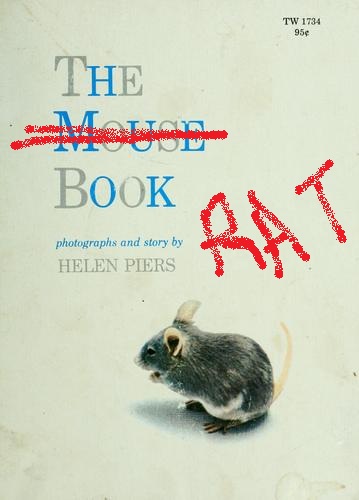[the book rat project] Week 12: Plenty of signs, not much wonder

Normal
0
false
false
false
MicrosoftInternetExplorer4
st1\:*{behavior:url(#ieooui) }
/* Style Definitions */
table.MsoNormalTable
{mso-style-name:"Table Normal";
mso-tstyle-rowband-size:0;
mso-tstyle-colband-size:0;
mso-style-noshow:yes;
mso-style-parent:"";
mso-padding-alt:0in 5.4pt 0in 5.4pt;
mso-para-margin:0in;
mso-para-margin-bottom:.0001pt;
mso-pagination:widow-orphan;
font-size:10.0pt;
font-family:"Times New Roman";
mso-ansi-language:#0400;
mso-fareast-language:#0400;
mso-bidi-language:#0400;}
It's time for another
installment of the Book Rat Project, the sustained experiment in which a book
critic (my Phoenix
colleague Eugenia
Williamson) attempts to act as a human algorithm for a willing subject (me).
After another
strong selection last week Eugenia went out on a limb and handed me Signs
and Wonders, Alix Ohlin’s newest collection of 16 stories. I wish I could
say the risk worked out better.
 Normal
0
false
false
false
MicrosoftInternetExplorer4
/* Style Definitions */
table.MsoNormalTable
{mso-style-name:"Table Normal";
mso-tstyle-rowband-size:0;
mso-tstyle-colband-size:0;
mso-style-noshow:yes;
mso-style-parent:"";
mso-padding-alt:0in 5.4pt 0in 5.4pt;
mso-para-margin:0in;
mso-para-margin-bottom:.0001pt;
mso-pagination:widow-orphan;
font-size:10.0pt;
font-family:"Times New Roman";
mso-ansi-language:#0400;
mso-fareast-language:#0400;
mso-bidi-language:#0400;}
Normal
0
false
false
false
MicrosoftInternetExplorer4
/* Style Definitions */
table.MsoNormalTable
{mso-style-name:"Table Normal";
mso-tstyle-rowband-size:0;
mso-tstyle-colband-size:0;
mso-style-noshow:yes;
mso-style-parent:"";
mso-padding-alt:0in 5.4pt 0in 5.4pt;
mso-para-margin:0in;
mso-para-margin-bottom:.0001pt;
mso-pagination:widow-orphan;
font-size:10.0pt;
font-family:"Times New Roman";
mso-ansi-language:#0400;
mso-fareast-language:#0400;
mso-bidi-language:#0400;}
Ohlin has nearly mastered
the art of economy, but not quite. Highly adept at placing deeply imagined
individuals in stressful situations, Ohlin teases out uncomfortable,
recognizable truths. To be certain there are repetitions—as there are in most
collections—but these memes are obscured by Ohlin’s steady command of plot and
language. A couple desperate for a child destroys and rediscovers their
relationship; a man is forced to reconnect with his teenaged son; a stepmother
has a precognitive experience that saves a child—these high-concept
distillations fail to capture Ohlin's persuasive verve, but I think they get
the idea across: these are stories about the unexpected ways that people, and
our relationships, can suddenly shift and evolve without warning.
Unfortunately all good
things must end, and in Signs and Wonders the endings are the
problem. It’s hard to expand on this criticism without including some spoilers,
but I’ll try. In one story a woman watches her second marriage unexpectedly
implode, and dies; we’re only left to guess how, or even if, her death affects
the other characters; an unlikely relationship is born, and ends silently. Two
other pieces revolve around coma patients and the people that care for them;
both stories end with weak-tea codas. I wish I could say these were the
exceptions, but they’re not.
While her emotional
intelligence is admirable, and her knack for surprise enviable, Ohlin’s
apparently capacity for the pitch-perfect ending left the bulk of these skits
feeling hollow, as though they were questionably--if admirably--connected bits.
The Book Rat Letter Grade: C
From Eugenia:
Last week, you read some
(unintentionally) mediocre literary fiction. This week, you’ll be reading Dirt,
the third book from David Vann, whom the Economist calls “a man to watch
carefully.” (Why do we need to watch him so carefully? Is he going to shoot
people from the top of a clock tower?) I chose this book on the basis of back-cover
blurbs, one that called his last book “disturbing” (NPR), “darker…than the
daylight world (NYT) and “full of our darkest currents.” Literary horror, if it
works, is super fun.
So tune in next week Book
Rat fans, and we'll see if Eugenia has managed to pick a winner!
















